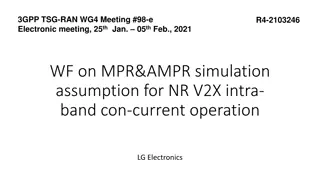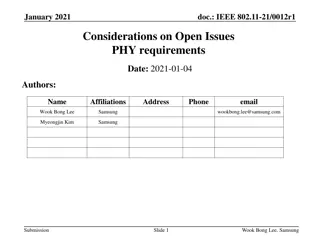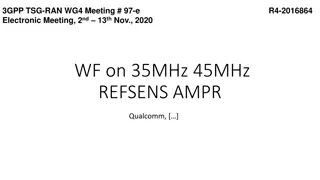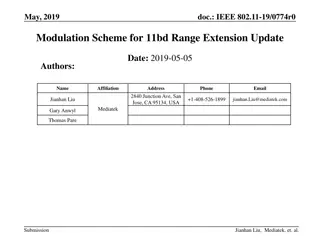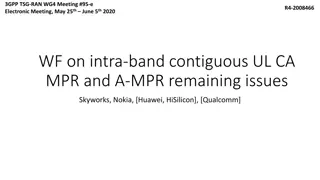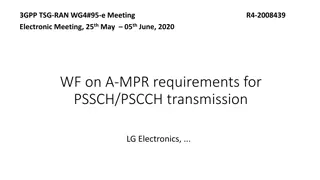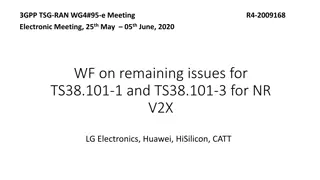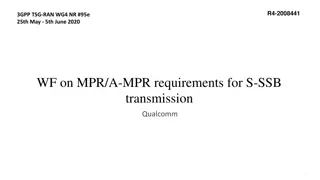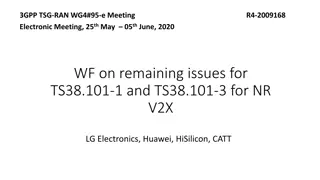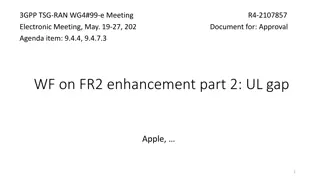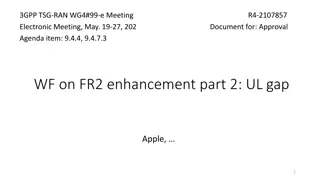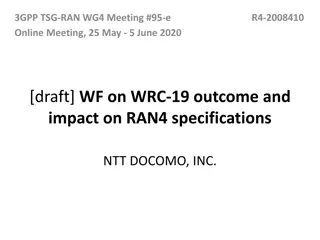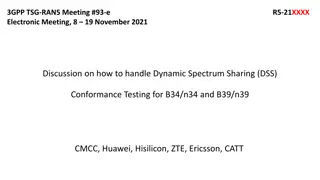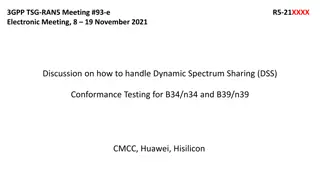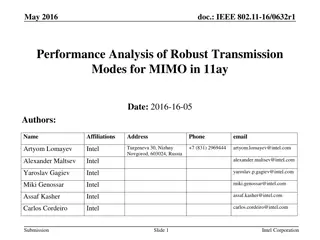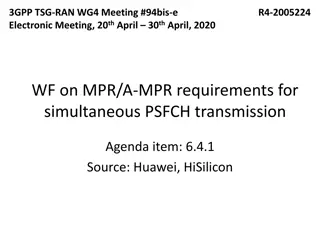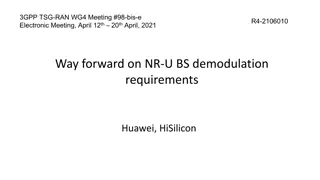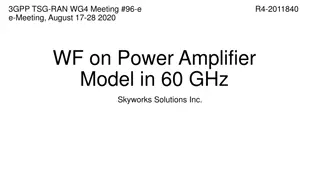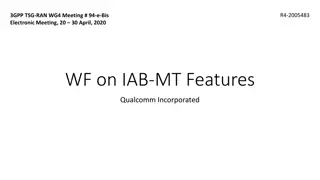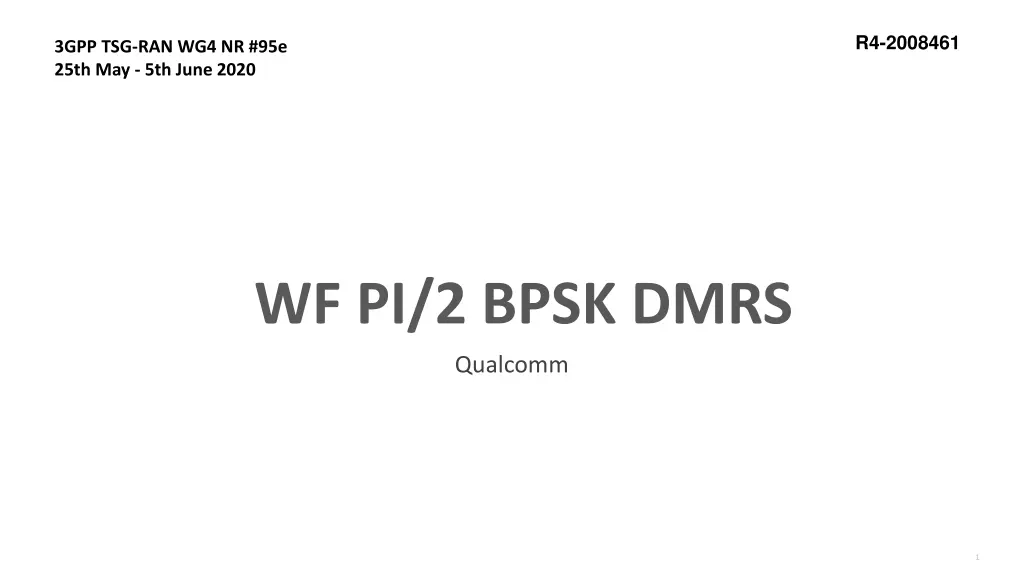
Implementing Pi/2 BPSK DMRS in Standard Background
Learn about Pi/2 BPSK DMRS implementation in standard background, including discussions on PAPR reduction, MPR improvements, and proposed changes to the TS38.101-1 standard for the new waveform. Discover insights from industry evaluations and considerations for FDSS utilization. Explore the evolution of MPR requirements and potential advancements in Rel-17.
Download Presentation

Please find below an Image/Link to download the presentation.
The content on the website is provided AS IS for your information and personal use only. It may not be sold, licensed, or shared on other websites without obtaining consent from the author. If you encounter any issues during the download, it is possible that the publisher has removed the file from their server.
You are allowed to download the files provided on this website for personal or commercial use, subject to the condition that they are used lawfully. All files are the property of their respective owners.
The content on the website is provided AS IS for your information and personal use only. It may not be sold, licensed, or shared on other websites without obtaining consent from the author.
E N D
Presentation Transcript
R4-2008461 3GPP TSG-RAN WG4 NR #95e 25th May - 5th June 2020 WF PI/2 BPSK DMRS Qualcomm 1
WF on Pi/2 BPSK DMRS Implementation in Standard Background PAPR reduction is based on the condition of utilizing FDSS FDSS is not mandatory to be implemented. For powerBoostPi2BPSK = 1, which assumes FDSS is utilized, some evaluation observed that MPR defined for Rel-15 cannot be reached for ZC based DMRS. Without 6.4.2.4.1 (TS38.101-1) being applicable, while using FDSS to reduce the PAPR, it means the EVM spectrum flatness requirement is tightened significantly. ManySome companies observed with powerBoostPi2BPSK = 0 with FDSS, the MPR can be improved by ~0.5dB for outer and edge allocations. Inner has already 0dB MPR. However, other company observed that the relative MPR improvement is not obvious using Pi/2 BPSK based DMRS compared to ZC based DMRS. A UE is not required to meet performance requirements with all possible filter coefficient sets. A design can be optimized for a given set of coefficients[2] 2 Qualcomm proprietary and confidential
WF on Pi/2 BPSK DMRS Implementation in Standard The following are some excerpts of proposed changes to TS38.101-1 to introduce this new waveform EVM equalizer spectrum flatness described in 6.4.2.4.1 applies to new waveform if the IE powerBoostPi2BPSK is set to 1, which means FDSS should be adopted for the waveform, however, if the IE powerBoostPi2BPSK is set to 0, no matter which DMRS sequence is utilized, FDSS is not mandatory to be implemented 3
WF on Pi/2 BPSK DMRS Implementation in Standard MPR for new waveform is entered into the standard as: No consensus was reached in Rel-16 for MPR improvement 4
WF on Pi/2 BPSK DMRS No requirements are identified in Rel-16 for pi/2 BPSK DMRS for FR1. MPR improvement can be further studied in Rel-17 For powerBoostPi2BPSK = 1, MPR for Rel-15 shall be revisited 5
References [1] R4-2008306 Email_Discussion_116_1stRound_Summary.doc , May-June 2020 [2] R4-2006822 Pi/2 BPSK DMRS Investigation , RAN4#95e, May June 2020 [3] R4-2008216, On Pi/2 BPSK DMRS , RAN4#95e, May June 2020 6 Qualcomm proprietary and confidential

